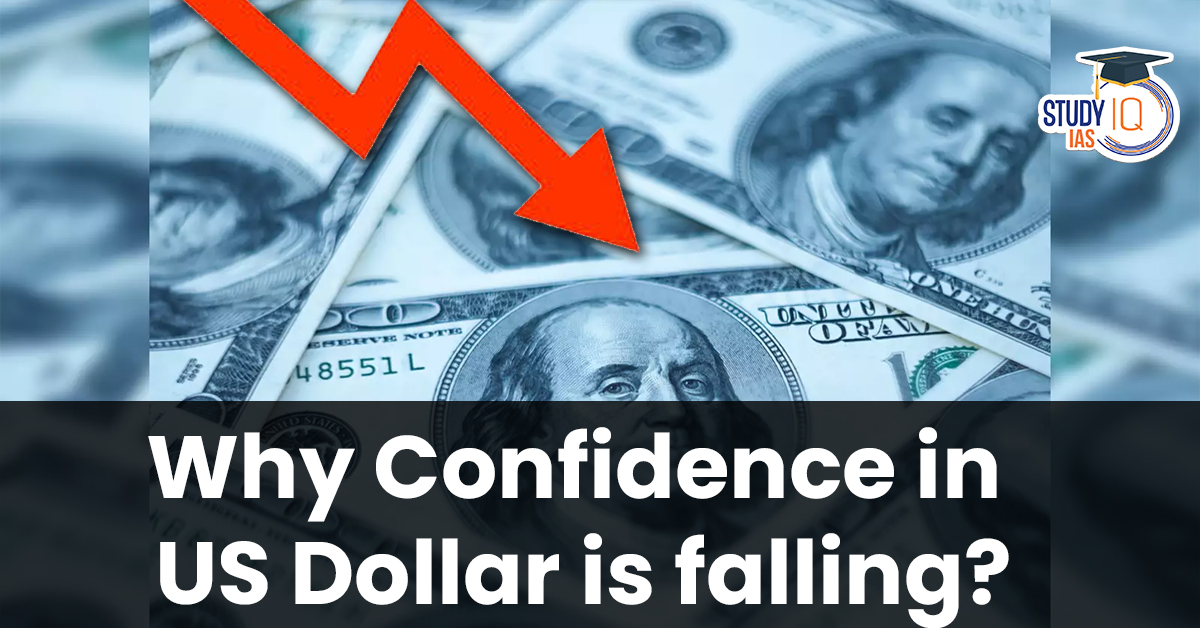Table of Contents
Context: Recently the US dollar has started losing value due to reciprocal tariffs.
What is the Bond Market?
- Bond = A Loan to Government or Company
- When a government or company needs money, they borrow from investors by issuing “bonds”.
- A bond is a promise to repay the money after a fixed time, with regular interest payments.
- Government Bonds = Very Safe Investments
- Bonds issued by governments (like UK, US, India) are considered low-risk, because governments rarely default.
- These are often called “sovereign bonds”.
- Bond Price and Yield
- Bond Price: The cost of buying the bond in the market.
- Yield: The return you get (like interest) from the bond.
- If bond prices go down, yields go up, and vice versa.
Relation Between Bond Market and Currency Value
- Rising Yields = Investors Demand Higher Returns
- If investors think a country’s economic policy is risky (like too much borrowing), they sell that country’s bonds.
- This pushes bond prices down and yields up.
- Higher Yields = Higher Cost for the Government
- The government has to pay more interest to borrow money in the future.
- This can hurt government finances and investor confidence.
- Investor Confidence Affects Currency Value
- If investors lose trust in a country’s economy, they may also lose trust in its currency.
- They start selling the currency and pull out their money.
- Selling of Currency = Currency Weakens
- If many investors sell a currency (like the pound), its value falls compared to other currencies (like the US dollar).
- Example: UK Under Liz Truss (2022)
- Investors feared her tax-cut + spending plans would worsen debt and inflation.
- They sold UK bonds → yields rose → lost faith in the pound → pound crashed to a 37-year low.
Why Confidence in US Dollar Falling?
- Investor Uncertainty due to Unpredictable Tariff Policies: President Trump’s tariff-heavy approach — especially against allies and adversaries alike — created global uncertainty.
- Lack of clarity on end goals and arbitrary tariff rates spooked global markets, leading investors to diversify away from the US dollar.
- Rising US Government Bond Yields: Investors sold US government bonds, causing bond prices to fall and yields to rise.
- High yields typically attract investors, but in this case, rising yields were interpreted as a sign of increased risk and poor fiscal management (especially with national debt exceeding $35 trillion).
- Result: Investors demanded higher returns, signaling lower trust in long-term US financial stability.
- Shift to Other Stable Currencies: With rising global volatility, investors traditionally prefer to the US dollar. However, during this phase, they preferred the euro, yen, Swiss franc, etc.
- This shift shows a loss of faith in the dollar as a “safe haven”, a title it held for decades.
- Falling Oil Prices & Energy Market Woes: Trump’s policy of energy dominance (“drill baby drill”) was hit by slumping crude oil prices.
- Below $60/barrel, US shale oil becomes uneconomic, threatening one of the key pillars of US trade power.
- This undermined investor confidence in the US energy-backed economic narrative.
- Huge US Debt Burden: With $35 trillion+ in national debt, rising yields mean the US has to pay more in interest.
- This raises concerns about long-term debt sustainability, pushing investors away from US assets and reducing dollar demand.
- Political Interference & Policy Instability: The Federal Reserve’s independence has been a key reason behind global trust in the dollar.
- Any signs (even indirect) of political interference in monetary policy (as feared under Trump) undermines investor faith in the system’s credibility.


 How RBI Responded To Global Trade War Ch...
How RBI Responded To Global Trade War Ch...
 Repo Rate and Reverse Repo Rate, Impact ...
Repo Rate and Reverse Repo Rate, Impact ...
 Foreign Contribution Regulation Act (FCR...
Foreign Contribution Regulation Act (FCR...





















